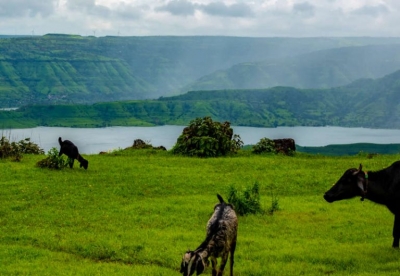
The Western Ghats or Sahyadri is a mountain range that runs parallel to the western coast of the Indian peninsula, located entirely in India. It is a UNESCO World Heritage Site and is one of the eight “hottest hotspots” of biological diversity in the world. It is sometimes called the Great Escarpment of India. The range runs north to south along the western edge of the Deccan Plateau, and separates the plateau from a narrow coastal plain, called Konkan, along the Arabian Sea. A total of thirty nine properties including national parks, wildlife sanctuaries and reserve forests were designated as world heritage sites – twenty in Kerala, ten in Karnataka, five in Tamil Nadu and four in Maharashtra.
The mountains intercept the rain-bearing westerly monsoon winds, and are consequently an area of high rainfall, particularly on their western side. The dense forests also contribute to the precipitation of the area by acting as a substrate for condensation of moist rising orographic winds from the sea, and releasing much of the moisture back into the air via transpiration, allowing it to later condense and fall again as rain. The largest city within the mountains is the city of Pune (Poona), in the Desh region on the eastern edge of the range. The Biligirirangan Hills lie at the confluence of the Western and Eastern Ghats.
There are at least 139 mammal species. Of the 16 endemic mammals, 13 are threatened and amongst the 32 threatened species include the critically endangered Malabar large-spotted civet, the endangered lion-tailed macaque, Nilgiri tahr, Bengal tiger and Indian elephants, the vulnerable Indian leopard, Nilgiri langur and gaur.
Picture Credit : Google

